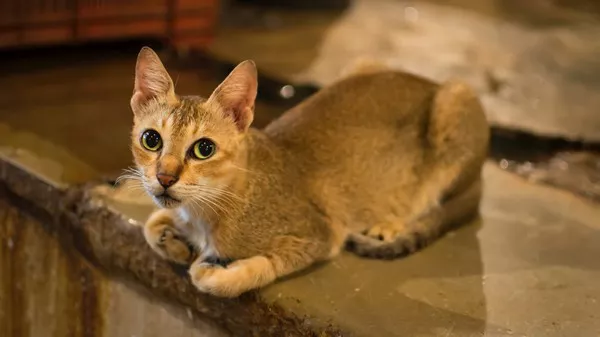Fleas are a common nuisance for cats and their owners. These tiny, blood-sucking parasites can cause itching, discomfort, and even transmit diseases to your feline companion. If you’ve noticed your cat scratching more than usual or have found evidence of fleas, it’s essential to take action promptly. In this comprehensive guide, we will explore how to get rid of fleas on your cat and prevent future infestations.
The Impact of Fleas on Cats
Itching and Discomfort: Flea bites are itchy and can cause your cat to scratch excessively. This can lead to hair loss, skin irritation, and even open sores.
Allergic Reactions: Some cats are hypersensitive to flea saliva, leading to an allergic reaction known as flea allergy dermatitis (FAD). FAD can result in severe itching and skin problems.
Anemia: In severe infestations, especially in kittens or elderly cats, fleas can lead to anemia, a condition characterized by a low red blood cell count.
Transmission of Diseases: Fleas can transmit various diseases to cats, including tapeworms and Bartonella (cat scratch disease).
Stress and Behavioral Changes: Constant itching and discomfort can make your cat anxious, irritable, and lethargic.
How to Get Rid of Fleas on Your Cat
If you suspect or have confirmed that your cat has fleas, it’s crucial to take immediate steps to eliminate the infestation. Here’s a step-by-step guide on how to get rid of fleas on your cat:
1. Thoroughly Inspect Your Cat
Begin by examining your cat’s fur and skin for evidence of fleas. Look for small, fast-moving insects or tiny, reddish-brown specks (flea dirt) on your cat’s fur. Flea dirt is a sure sign of a flea infestation.
2. Isolate Your Cat
If you have multiple pets, isolate the infested cat to prevent the fleas from spreading to others. Place your cat in a clean, flea-free room or a carrier.
3. Bathe Your Cat
Give your cat a flea bath using a cat-specific flea shampoo. Make sure to follow the product’s instructions carefully. Begin by wetting your cat’s fur and applying the shampoo, focusing on the neck and back areas where fleas often congregate. Rinse thoroughly and dry your cat with a clean towel.
4. Use a Flea Comb
After bathing, use a fine-toothed flea comb to comb through your cat’s fur. This will help remove any remaining live fleas and flea dirt. Have a bowl of soapy water nearby to drown any fleas you comb out.
5. Consult Your Veterinarian
Contact your veterinarian to discuss treatment options. They can recommend safe and effective flea control products suitable for your cat’s age, weight, and health status. Common options include topical treatments, oral medications, and collars.
6. Administer Flea Control Products
Follow your veterinarian’s recommendations and administer the selected flea control product according to the instructions. Be consistent with the treatment schedule, as fleas have different life stages that require continued treatment to eradicate completely.
7. Treat Your Home
Fleas don’t just infest your cat; they can also take up residence in your home. To prevent reinfestation, take the following steps to treat your environment:
- Wash Bedding: Wash your cat’s bedding, as well as any blankets, cushions, or fabric your cat frequently uses, in hot water.
- Vacuum Thoroughly: Vacuum your home thoroughly, paying attention to areas where your cat spends the most time. Be sure to vacuum carpets, rugs, upholstery, and even cracks and crevices where fleas can hide.
- Use Flea Sprays or Foggers: Consider using flea control products designed for your home, such as flea sprays or foggers. Follow the product instructions carefully and ensure your pets are removed from the treated areas during application.
- Treat Your Yard: If your cat spends time outdoors, consider treating your yard for fleas. There are yard sprays and treatments available that can help reduce the flea population in your outdoor space.
8. Monitor and Repeat
Continue to monitor your cat for any signs of fleas and maintain their flea control regimen as recommended by your veterinarian. It’s essential to be vigilant, as fleas can quickly return if not properly controlled.
Preventing Fleas on Your Cat
Preventing fleas is often more manageable and less stressful than dealing with an infestation. Here are some steps you can take to prevent fleas from becoming a problem for your cat:
1. Regularly Groom Your Cat
Regular grooming helps you detect fleas or flea dirt early and can also remove debris and loose hair that may attract fleas.
2. Use Preventive Products
Consult your veterinarian for the best flea preventive products for your cat. These may include topical treatments, oral medications, or flea collars. Administer these products consistently as directed.
3. Keep Your Home Clean
Maintain a clean living environment for your cat. Regularly vacuum, wash bedding, and clean your home to reduce the risk of fleas taking hold.
4. Control Outdoor Exposure
If your cat goes outside, be mindful of their outdoor activities, as exposure to other animals can increase the risk of flea infestations. Consider using a leash or outdoor enclosure to limit your cat’s roaming.
5. Treat Your Yard
If your cat spends time outdoors, treat your yard with flea control products designed for outdoor use. This can help prevent fleas from infesting your outdoor space.
6. Regular Veterinary Check-ups
Schedule regular check-ups with your veterinarian to monitor your cat’s overall health and address any potential flea issues promptly.
Conclusion
Fleas are a common concern for cat owners, but with proper prevention and prompt treatment, you can keep your feline friend flea-free and comfortable. Remember to consult your veterinarian for guidance on the best flea control products and to discuss any concerns about your cat’s health. By being proactive and vigilant, you can protect your cat from the itching, discomfort, and health risks associated with fleas.

























